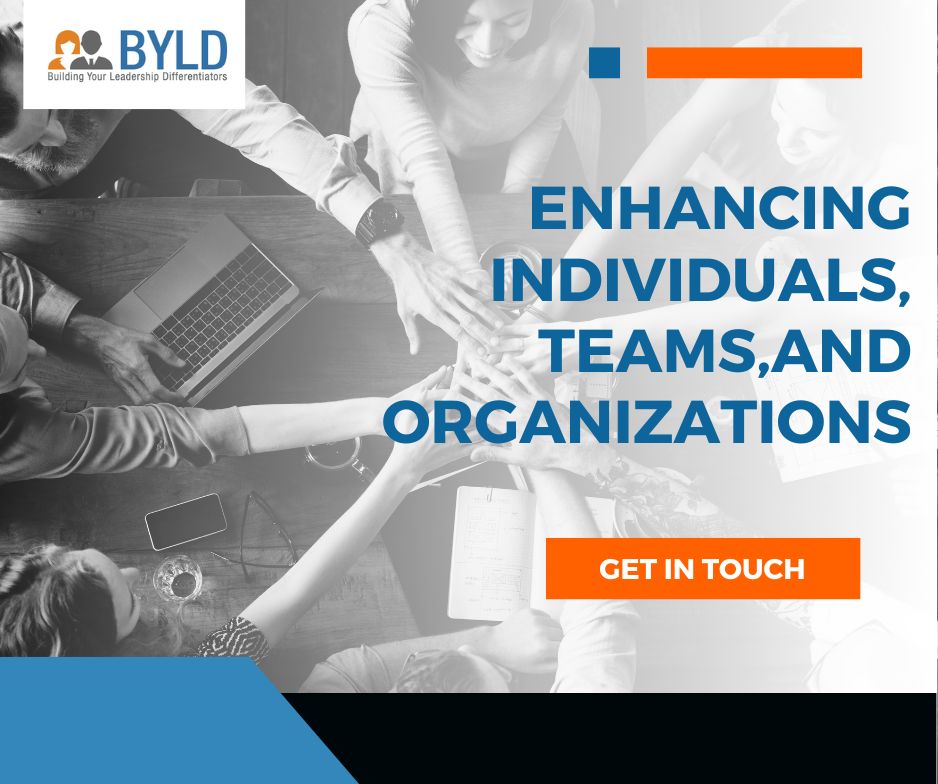
How a Construction Company Transformed Team Dynamics with the Five Behaviors™ Model

What occurs when a group of exceptional performers are unable to function as a cohesive unit? One of the top construction companies had to deal with this problem. Although their management team was full of talent and experience, they were making less and less progress. The lack of genuine collaboration was the problem, not capability. Instead of concentrating on common objectives, each member was more concerned with their own success. As personal agendas and internal rivalries emerged, trust broke down and overall performance suffered.
When the new CEO took the reins, he witnessed the problem clearly and, determined to turn things around, he introduced “The Five Behaviors™ Model” with the help of BYLD, initiating the change in the team management and dynamics. We are going to discuss how a competitive culture was reshaped into a cohesive force, driving better teamwork, stronger relationships and over 50% growth in revenue.
The Challenge:
The construction firm fell into the category of a cutthroat, internally competitive firm. Upon stepping into the role, the new CEO noticed how detrimental his management team’s competitive edges actively worked towards in unison was to their integrated achievement as a unit. The people who made up the management team were certainly very skilled, but the focus on winning led to intergroup conflict and ultimately, poor performance in meeting collective targets.
The new CEO recognized there was an unchecked mentality somewhere along the line in the hierarchy. Efforts from the team were instead focused on the personal agendas they had, along with participation exclusion and side sessions of important conversations. With the goals that were set out individually, both the aims and milestones were bound to face hurdles in collaborative strategies. The CEO was looking for a way to channel their focus towards collective goals that enhanced team performance.
Competition in business is healthy as it encourages employees to maximize their outputs, however the pros can easily outweigh the cons. The uptick in competition may decrease productivity, creativity, and innovation.
The Solution:
The Construction Company CEO once stated, “We devote an immense amount of time constructing the project, but we don’t prioritise building a team that will execute the project. We are fortunate to have this management team, and now it’s on us to make things happen.”
Every participant of the cohesive framework workshop conducted over three days was a part of the team self-enhancement program derived from Lencioni’s hit “The Five Dysfunctions of a Team” which turned out to be a massive success.
The Wiley five behaviors model, which focuses on trust, conflict, commitment, accountability, and results, contains the explanation of why so many first-class firms start a team training session – to rekindle interest by making promises of transforming results through delegated actions.
With a provided understanding of their personality alongside that of their co-participants, the program members see how personality determines participation in team building. It assisted the management in proceeding through the five behaviours and learn to strive for building the foundational trust that enables high-functioning teams.
Impact of Team-Oriented Behaviours
The Five Behaviours event uncovering tension within teams provided a safe environment to reflect on progress and have difficult conversations. As with all other actions, the program starts with trusting the first behaviour of the model. They started overcoming the barriers to vulnerability and viewing each other as colleagues rather than competitors.
Self-awareness is also equally as important as “There needs to be a level of self-awareness. The model helped the team member to face challenging conversations” The moment a team realizes the vulnerability-based trust impacts their functioning, it becomes a natural routine. Over time, the model cemented further into the company. Management embraced constructive conflict as the optimal way to resolve issues. They found ways to respectfully disagree with and ultimately support decisions reached.
When the facilitator monitored team meetings and provided comments like, “You missed an opportunity to hold someone accountable,” he was referring to the missing accountability, which is the fourth behaviour, and it is difficult to sustain in the team-building activity.
As the CEO mentioned, “In a particular setup, sharing responsibility is a little out of place, but if one demonstrably does not exercise accountability in just one meeting, that sets a benchmark for future meetings. The feedback allowed me to manage expectations.”
Responsibility, when delegated to one individual, is simple to circumvent. When everyone is responsible for holding one another accountable, it is much more effective.
Read More – Learning How to Change the Behaviors of Your Team to Increase Performance
Turning Individual Strengths into Collective Power
Before the intervention, every leader acted like a personnel specialist. Each element of The Five Behaviors™ Model compels them to convert their efforts toward team accomplishments instead of personal achievements. Using DISC insights, they came to understand how different personality types could complement each other. Those with analytical minds began to appreciate big picture thinkers. More assertive individuals made room for quieter, reflective voices.
This created appreciation for strengths, which enabled more balanced discussions and improved collaboration. The communication gap was bridged, but individuality was not lost. Rather, it was about aligning diverse strengths to create a collective workforce. With trust, there was willingness among team members to accept feedback and the readiness to step outside their comfort zones.
They came to realize that combining their competencies gave rise to a highly adaptable unit for tackling challenging problems. This change reduced silos, enhanced sharing of information, and cultivated an environment where every individual became significant, improving organizational decision making and shared outcomes.
Tracking Progress and Results:
The model integrated into their daily interactions changed the team‘s perception. Due to the content-rich and meaningful nature within the context of the Five Behaviours, the teams started requesting more in-person meetings.
There was a significant improvement in all five behaviours, which yielded high scores across the model. This further enabled the team to be more strategically productive from an organisational perspective. With the investment in the model, the team was able to determine its competitive advantage in the market. This improved revenue by more than 50%. Several team members earned the Five Behaviours certification to enhance their decision-making and performance.
The organisation is undergoing a transition towards a more collaborative culture with the management team. The impact on the team’s effectiveness and productivity was profoundly positive. The company managers continue to evolve as a team, actively challenging themselves and one another to bring team behaviours to the centre of everything they do.
Understanding the Five Behaviors™ Model
The Five Behaviors™ Model is an amazing framework tailored to assist teams work seamlessly together. As we know, great teamwork requires trust, healthy conflict, dedication and responsibility, accountability, and a focus on results.
Vulnerability-based trust is where it all begins, starting with Trust. This indicates that team members can be completely honest, seek assistance, and admit flaws without any retribution. Trust further strengthens the opening door for Conflict. There is respect and healthy debate, and open discourse where diverse opinions are accepted. Team decisions have a high chance of being optimised through respectful disagreements.
The next step is Commitment, where clarity is essential. Although not every member of the team does not agrees, each one of them is willing to align with the party’s decision and support the decision that has been made. Once there is commitment in the picture, the team members’ responsibilities become easier. Not as a punishment, but to aid normalised shared goals and ensure the continuity of motivation.
Finally, all efforts lead to the last step, which is Results. The team ranks a group’s success above individual success. Everyone puts in their part, and the outcome is achieved, performance is raised alongside success.
When put together, these five behaviors set up a norming team culture which enhance trust, collaboration, streamlined amazing results, and exceptional motivation for shared success.
About BYLD (Building Your Leadership Differentiator)
At BYLD, we are passionate about helping individuals and organisations unlock their full potential through behaviour-based learning and leadership development. We have become South Asia’s leading integrated workplace transformation firm. Our mission is to empower people and businesses to lead with purpose, communicate effectively, and collaborate meaningfully.
What makes us different is our deep understanding of human behaviour and our ability to blend global practices with the unique needs of Indian and South Asian organisations. We don’t just deliver training, we create experiences that drive real change and measurable results. We believe that leadership is a differentiator, not a title, and we are here to help our clients build that every day.
Read More – The Five Behaviors of a Cohesive Team that Leads to a Greater Business Efficiency
Final Words:
The construction company showed that real success does not just come from building great projects; it comes from building a strong team. With help from “The Five Behaviours” model, the management team learned to trust each other, have open and honest discussions, stay committed, hold one another accountable, and work toward shared goals. What started as a group of talented individuals competing with each other became a united, high-performing team. The model helped the team build better relationships, and everyone worked together. They witnessed big improvements.
By focusing on teamwork, the construction company grew stronger, and its revenue grew too. This journey proves that when teams work better together, they achieve more, and everyone wins.
Related Posts







